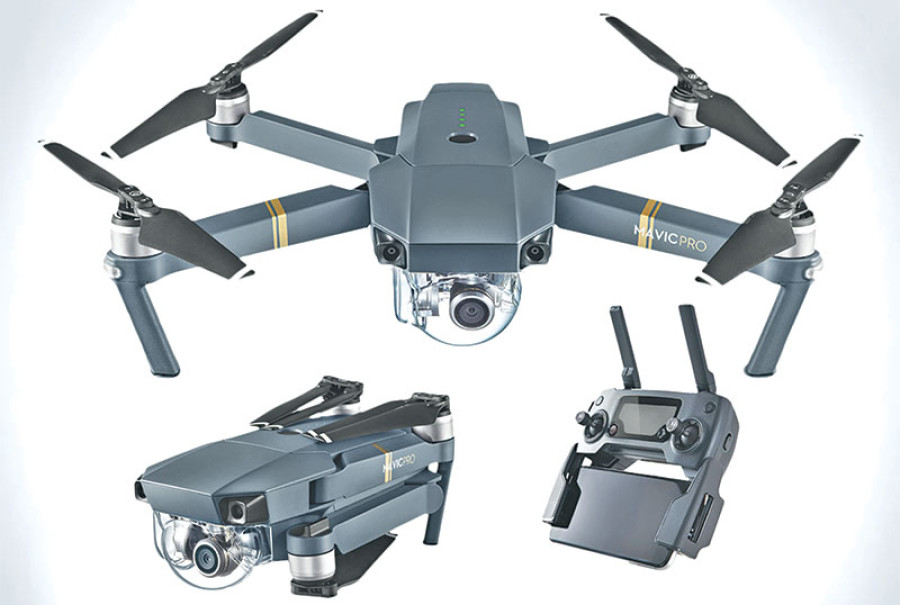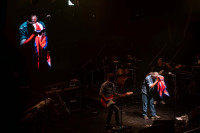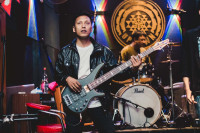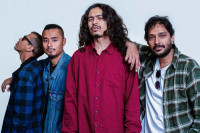Entertainment
Soaring up with DJI Mavic Pro
Quadcopters are rapidly gaining popularity in Nepal. These devices got full recognition in the country in the immediate aftermath of the 2015 earthquakes. Two years down the line, the quadcopters have begun trending among people from various walks of life—social activists, storytellers, and explorers.
Anuj Bhandary
Quadcopters are rapidly gaining popularity in Nepal. These devices got full recognition in the country in the immediate aftermath of the 2015 earthquakes. Two years down the line, the quadcopters have begun trending among people from various walks of life—social activists, storytellers, and explorers.
Evostore is currently the authorised dealer for DJI Mavic Pro—priced Rs 136,000—here in Nepal, and many people seem increasingly interested in the device. However, the question remains, how worthy the device really is.
Design and durability
The DJI Mavic Pro is a relatively small and portable drone weighing in at just 734 grams. It comes with a simple trick up its sleeve—a foldable hinge mechanism. This mechanism has made the quadcopter quite portable. I could carry it around in my bagpack with ease.
The Mavic Pro has a foldable propeller which helps in maintaining balance whenever it crashes or runs into an obstacle. Once, I even caught my fingers in it, but due to the folding propellers it didn’t crash anywhere, and rather maintained its balance in the air.
All in all, the DJI Mavic Pro has a top-quality build despite its plastic frame. At first, I was skeptical about the DJI’s choice of material for the quadcopter. But playing around with it for a few minutes, I got hands-on experience of how durable it was and how it could withstand a couple of minor crashes.
While I couldn’t test the durability of the DJI Mavic Pro as voluminously as I would have liked, I viewed some YouTube videos, and the one from Expert Vagabond turned out to be my favourite. It seems he crashed his device into a river but a few days later he was still able to operate it easily.
Features
The DJI Mavic Pro is a feature-laden quadcopter. It comes with several different flying modes which work extremely well. As it was my first experience flying a Mavic Pro, I was under supervision. But even for an inexperienced user like me, the sheer fact that DJI has made the UI and the controller setting really basic is a bonus.
Among the notable flying modes like Follow Me Mode, Sports Mode, Tripod Mode, and Course Lock, the one that caught my eye is the Tripod Mode. This style gives off a DSLR’s tripod-esque vibes as it helps capture smooth videos due to the speed control. While I was controlling the device, the tripod mode controlled the pace of the drone itself and gave me some amazing cinematographic video clips.
The Mavic Pro houses DJI’s Active Track feature which is an object tracking technology. This feature has made the drone smart as it can track any obstacle on its way.

Camera
The best feature of the Mavic Pro has to be its camera. The device is packed with a 12.7-megapixel camera with 1/2.3” sensor. It has a Field of View of 78.8 degrees which could have been better. A gimbal supports the camera giving the lens a license to move upward and downward.
Using the camera’s manual mode, I could change the ISO and Shutter Speed. For me, the manual mode was even more impressive than the fact that the Mavic Pro can capture 4K video footage. All the clips and pictures are saved directly into the smartphone connected to a smartphone mount in the controller.
A small hitch that I experienced was how I had to tap over and over to focus. I wish DJI had included an auto-focusing technology in the device, so I didn’t have to concentrate on every object manually all the time.
The plus point about the DJI Mavic Pro for photography lovers is its competence to shoot RAW images. So, whenever I touched up some images on Lightroom, the end product was nothing short of amazing.
Performance and Flight time
Performance wise, the smart quadcopter shines in almost every department. I mostly used the Tripod Mode while flying the Mavic Pro and got some pretty smooth clips from its camera.
One of the major issues I noted was the fact that due to its light weight, the device oftentimes moves along with the gust of wind. However, ones from the Phantom series don’t have to go through this issue due to their relatively higher weight.
The DJI Mavic Pro has a flight time of around 25 minutes on a full charge. So, if you plan to use it for a filmographic purpose, I suggest you get the Fly More Combo variant which includes an extra set of batteries.
The drone has an ability to go up to a maximum height of 4.3 miles—which is a lot.
All in all
One has to do some nitpicking to point out the disadvantages in the device. If you are looking for higher speed and near-perfect stability, I would suggest that you get your hands on the Phantom. But, if portability is more your cup of tea, nothing comes close to the Mavic Pro. It has some nifty little tricks up its sleeve here and there, and the camera includes pro-level controllability. And when a drone-beginner like me can easily maneuver it in the Kathmandu air, I don’t see why you cannot.
Official rules and regulations for flying drones in Nepal
- You must first apply for and receive permission from the Civil Aviation Authority before flying a drone.
- However, if you are operating it in your private property without exceeding a height of 500m, you don’t need that permission.
- You cannot fly your drone over crowds of people.
- You must maneuver it during daylight hours and only fly in good weather conditions.
- Do not fly your drone over military installations, power plants or other areas that could cause concern among the local authorities.
- Do not fly your drone near airports or areas where aircrafts are operating.
For more news, reviews and information on new and old technology in the town, visit www.gadgetbytenepal.com If your technological devices are giving you a hard time or if your's just curious about certain things, pleae drop up an email at [email protected]




 9.12°C Kathmandu
9.12°C Kathmandu










